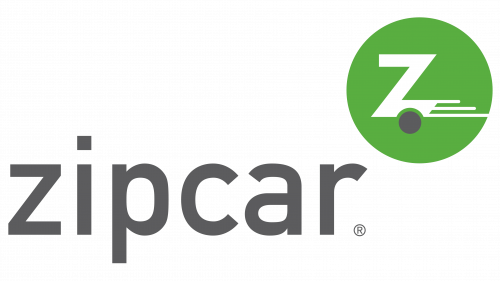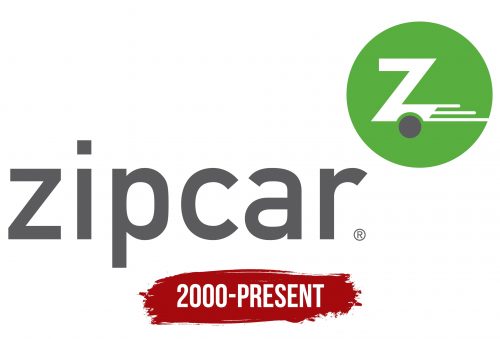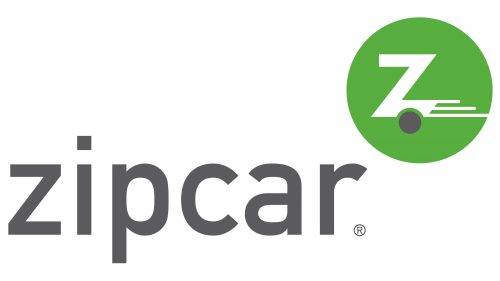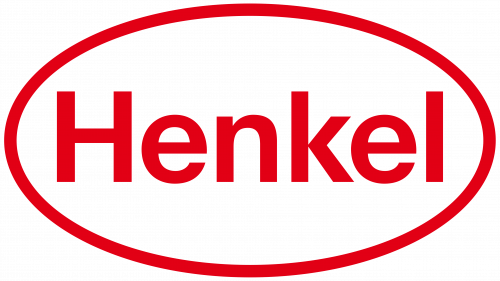The Zipcar logo conveys high energy from the movement of cars and the short-term car rental services it offers. Speed, simplicity, and convenience are the key factors successfully reflected in the concise emblem, effectively attracting customers.
Zipcar: Brand overview
In 2000, Antoinette Maldonado and Robin Chase developed Zipcar in Cambridge, Massachusetts. Chase got the idea for the business when visiting Germany and becoming familiar with car-sharing. Inspired by this concept, she modified it for the American market.
When the business was first established, it was known as GoLoco. It provided car-sharing services for Boston-area instructors and students. In its first year of operation, it had about 400 members and 22 cars.
Boston Community Venture Fund and other investors contributed $1.3 million, the company’s first sizable investment, in 2001. This finance allowed the company to grow its fleet and operate outside Boston.
2002 was an important year for technological advancement. Developing and applying its in-house technology made it much easier for clients to book and access cars.
In 2003, Scott Griffith took over as CEO from Robin Chase. Under his direction, the company pursued an ambitious expansion strategy, entering new markets and locations.
In 2004, it made its initial national expansion into the Washington, D.C..
Benchmark Capital contributed $10 million in 2005, allowing the company to grow and expand quickly.
2006 was a year of great expansion for the company. Its initial step outside of North America was to reach the markets of Toronto, San Francisco, and London.
By merging with Flexcar, its biggest American rival, in 2007, it considerably improved its standing in the car-sharing industry.
The mobile app was released in 2009, adding even more convenience to the service for users.
2010 saw it start collaborating with colleges and providing its services to instructors and students. The business could grow its clientele and penetrate a new market by making this change.
2011 was a significant year for the business since it raised $174 million by going public on the NASDAQ stock exchange.
2012, it increased its European footprint by acquiring Denzel Mobility CarSharing GmbH, an Austrian car-sharing startup.
The company’s history dramatically shifted in 2013 when Avis Budget Group purchased it for $500 million. With this acquisition, it gained access to a bigger fleet and the financial backing of a significant automobile rental firm.
Over the years, it continued developing its technology solutions and expanding into new cities and nations. It introduced new types of vehicles to its fleet, including electric automobiles, and worked on optimizing the user experience for its consumers.
After being purchased by Avis Budget Group in 2014, it continued growing its global reach.
2015 was a major technological advancement for the company. It released a new mobile app that lets customers use their smartphones to unlock automobiles and book them.
In 2016, the corporation added electric cars to its fleet. The corporation also made environmentally friendly transportation solutions available to its consumers by launching a pilot program in many major U.S. cities.
In 2017, it prioritized collaborations with academic institutions. With over 500 colleges and institutions in North America, the organization has partnerships to provide faculty and students with easy access to transportation.
In 2018, the business continued innovating the user experience. The business launched the “Instant Access” system, which eliminates the need for new users to wait for a physical access card and lets them use the service immediately after registering. This functionality expedited the onboarding process considerably for new users.
The “Flex” initiative was introduced in London in 2019. This service made one-way trips possible, especially for quick city excursions. It developed into a significant addition to the business’s conventional car-sharing model and created fresh chances for expansion in the UK market.
In 2020, it concentrated on growing its suburban footprint. To reach smaller towns and suburbs where traditional car-sharing services were less common, the company launched the Local program.
In 2021, it persisted in adjusting to shifting consumer demands and market circumstances. The business launched the “Dedicated” program, which gives customers exclusive access to rent a car for longer (from a few weeks to a few months). Those who needed personal transportation for a brief period but did not want to own a car were particularly fond of this service.
Significant progress was achieved in growing its electric vehicle fleet in 2022. The business formed partnerships with several prominent electric vehicle producers, greatly expanding the selection of electric vehicles in well-liked urban areas.
The cutting-edge “Smart Access” system, which uses biometric information for vehicle access, was unveiled in 2023. This method improved ease and security using facial recognition or fingerprint technology by eliminating the need for physical access cards or cell phones to open cars.
In 2024, it celebrated one year of global expansion. The company expanded into several Southeast Asian regions, such as Singapore and Malaysia, customizing its business plan to the demands of the regional economy and transportation system.
Meaning and History
What is Zipcar?
It is a car-sharing service that allows members to rent vehicles by the hour or day. The company provides a convenient alternative to traditional car rental and car ownership services, especially in urban areas. Participants can reserve vehicles through the mobile app or website, pick them up from specific locations, and return them to the same location after use. The brand offers a variety of vehicles, including sedans, SUVs, and electric cars, to suit different needs. The service aims to reduce the number of private cars, ease traffic congestion, and promote more sustainable urban mobility.
2000 – today
The Zipcar logo effectively conveys fast service and high vehicle speed, fundamental to the company’s concept of offering hourly car rentals. The company took a creative approach to its visual identity and chose an unconventional style that grabbed attention. This logo reflects the energy and desire to provide top-notch service in full.
However, the emblem also contains traditional elements; for example, it is divided into two parts that harmoniously complement each other. The text includes the company name and explains the meaning of the graphic, while the graphic visualizes the text’s message. This connection demonstrates the company’s thoughtful branding approach and desire to grow with a customer-focused mindset. The result is a minimalist yet recognizable trademark.
The name comes first. It is set in a lowercase sans-serif font. The large, bold letters inspire trust and convey the brand’s reliability. The glyphs form a harmonious blend of strictness and softness, consisting of strokes of various types: smooth, rounded, straight, sleek, and angular. The letter “i” stands out with a small square instead of a dot. This graphic technique artistically enriches the emblem, adding uniqueness and a touch of formality.
At the end of the name, there is a personalized symbol for the car rental service. It features a bold gray dot connecting the text and graphic elements. Essentially, the dot should be over the “i,” but it gives the impression that it has rolled away and replaced a wheel.
Instead of a car, the first letter of the company name, “Z,” is used. The glyph is cleverly stylized to resemble a car hood or trunk, depending on the perspective from which this abstract object is viewed. It has sharp angles and a notch at the bottom for a wheel. To the right of the improvised car are three lines of varying lengths, reminiscent of classic speed lines, making the “Z” appear in motion. These lines symbolize energy, speed, and vehicles.
The background is a large green circle, representing the “green light” of a traffic signal. It symbolizes free movement—an open path in any direction for quickly accomplishing tasks. The green-white-gray color palette reflects a high concentration of energy, determination, honesty, and reliability, values of a company committed to quality customer service.






